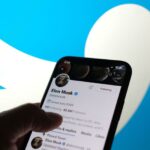Investors who have recently compounded Twitter Inc’s market worth by over $3 billion should take note of an underlying detail.
Although Twitter reports showed its second-quarter revenue rose more than double, and user base growth saw resurgence, a hidden element revealed during an online reveal during Twitter’s earnings report exhibits a worrying trend: The quotient of users who never encounter Twitter advertisements is on the rise, with the expansion rate of ad-viewing users slowing down.
Twitter’s most recent user count stands at 271 million, 14 percent of which, or 37.9 million individuals, do not directly access Twitter via its site or mobile app – the key platforms showcasing Twitter ads. Instead, these users interact via various third-party apps that are linked to Twitter.
These users may browse tweets on different digital news platforms like Flipboard, share pictures on Twitter via Instagram, disclose their locations using Foursquare, or share news articles from a variety of websites. They do not, however, launch the Twitter mobile app or visit Twitter.com, and therefore, do not view Twitter’s advertisements.
Other users categorized as ‘active users’ do not engage with Twitter content. Several mobile apps automatically extract data from Twitter’s servers, registering these users as active on a monthly basis, regardless of their activity on the apps. This factor contributes to why the percentage of Twitter users unexposed to ads has surged from 7% to 14% within the last year.
As the growth rate of third-party app users surpasses that of monetizable Twitter users, concerns regarding the expanse of Twitter’s commercial realm are emerging. Despite the inability to push ads in third-party apps, Twitter has engineered solutions to display a wider variety of ads, attract more user investment, particularly on mobile, leading to a doubling of its revenue to $312.2 million in the recent quarter.
Still, a secret ratio of third-party app users who never view or share Twitter content stays a challenge. Regardless of these users being bots or not, heavy reliance on such user metrics poses a hazard. Twitter aims to introduce new metrics which highlight its reach beyond just monthly active users.
There are rumors regarding Twitter’s plan to generate revenue from its third-party users. Late in 2013, Flipboard started piloting tests for full-page ads for Twitter within its tile, which flips through a user’s feed of stories pulled from their Twitter account.
source: YOREE KOH/Wall Street Journal
This article was updated in 2025 to reflect current trends and insights.
Discover more from TechBooky
Subscribe to get the latest posts sent to your email.






